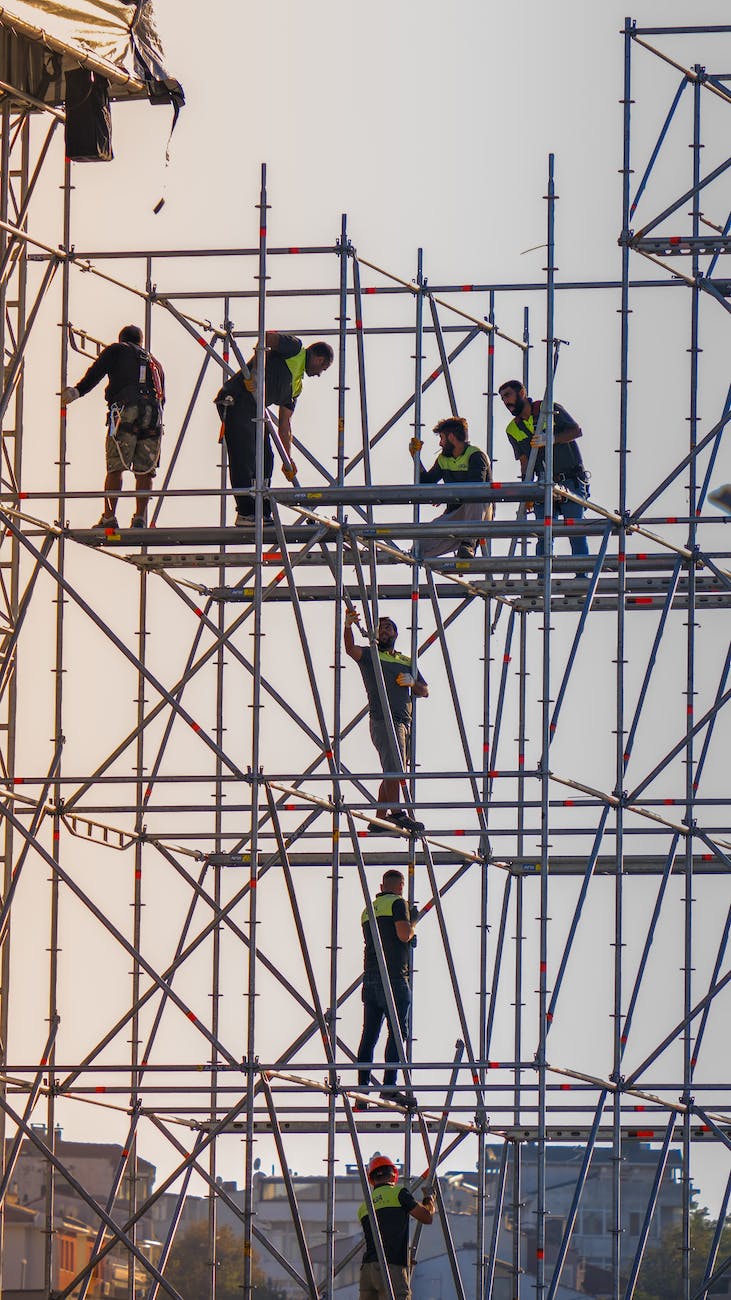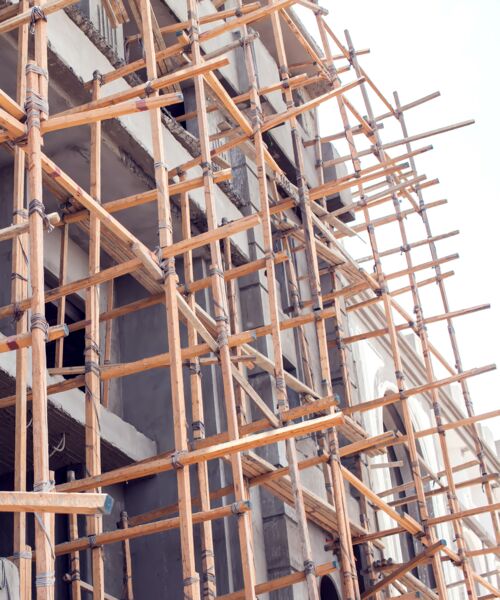Checking Out the Different Sorts Of Scaffolding Utilized in Construction Projects
The building and construction market counts heavily on various types of scaffolding to satisfy specific job demands, each offering distinct advantages and applications. Traditional structure scaffolding supplies a durable foundation for basic jobs, while put on hold scaffolding is important for job on high-rise structures.

Conventional Frame Scaffolding
Typical structure scaffolding is one of the most extensively utilized approaches in the building industry because of its effectiveness and versatility. This system includes upright and straight structures that are set up to produce a stable platform for employees and products. The primary elements consist of vertical blog posts, horizontal ledgers, and angled braces, which together supply a solid structure that can sustain substantial tons.
Among the crucial advantages of typical structure scaffolding is its versatility to numerous construction jobs, ranging from property structures to big commercial structures. The modular layout enables for simple assembly and disassembly, making it efficient for both temporary and long-lasting projects. In addition, the system can be personalized in elevation and size, accommodating various building layouts and website conditions.
Safety is extremely important in scaffolding applications, and traditional structure systems are equipped with guardrails and toe boards to stop drops and make certain worker protection. Furthermore, normal evaluations and adherence to safety and security laws are vital in preserving the honesty of the scaffold. On the whole, standard structure scaffolding remains an essential option in the construction industry, providing a trustworthy platform for labor and enhancing overall project efficiency

Suspended Scaffolding
Suspended scaffolding supplies an one-of-a-kind option for construction tasks that need access to elevated surface areas, especially in scenarios where conventional structure scaffolding might be unwise. This kind of scaffolding is normally put on hold from the roof covering or top degrees of a structure, using a system of ropes, pulley-blocks, and platforms to produce a functioning area that can be gotten used to different heights.
Among the primary benefits of suspended scaffolding is its flexibility. It can be quickly rearranged or lowered to accommodate adjustments in construction needs, making it ideal for tasks such as home window installation, façade work, and maintenance on skyscraper structures. Furthermore, the minimal footprint of suspended scaffolding permits much better use of ground area in urban settings, where area is usually restricted.
Safety and security is a vital factor to consider in the usage of suspended scaffolding. Overall, suspended scaffolding supplies a reliable and reliable solution for accessing hard-to-reach locations in numerous building circumstances, enhancing both productivity and security on website.
System Scaffolding
System scaffolding, usually considered a contemporary solution in the scaffolding industry, contains pre-engineered parts that can be rapidly put together and adjusted for various building and construction tasks. Scaffolding. This sort of scaffolding is defined by its modular design, which enables convenience and effectiveness on task sites, accommodating different heights and architectural requirements
Typically made from high-strength steel or light weight aluminum, system scaffolding uses improved sturdiness resource and security. The parts consist of upright articles, straight ledgers, and diagonal braces, which adjoin firmly, guaranteeing a durable structure. The layout usually integrates standardized installations, simplifying setting up and disassembly processes, consequently lowering labor time and costs.

Rolling Scaffolding
Rolling scaffolding is a versatile choice to typical set scaffolding, created for movement and ease of usage on construction websites. This kind of scaffolding includes a platform supported by frames with wheels, permitting employees to easily relocate it as required. The mobility attribute dramatically improves performance, as it decreases downtime related to disassembling and putting together dealt with scaffolding.
Usually built from light-weight products such as aluminum or steel, rolling scaffolding supplies a durable yet portable option for tasks requiring regular repositioning - Scaffolding. It is especially useful in jobs such as painting, drywall installation, and electric job, where access to various elevations and locations is needed
Security is critical in rolling scaffolding style, with attributes such as locking wheels to stop unplanned motion when in operation, and guardrails to protect employees from drops. Additionally, numerous designs are adjustable in elevation, suiting different project requirements.
Cantilever Scaffolding

The layout of cantilever scaffolding generally entails making use of brackets or arms secured to a building or framework, allowing the platform to prolong exterior safely. Security is extremely important; therefore, these scaffolds should be engineered to endure ecological problems and numerous tons. Routine assessment and upkeep are important to make certain structural honesty and worker safety.
Cantilever scaffolding is preferred for its adaptability and effective use room, making it a popular choice in metropolitan settings where space constraints are usual. It assists in much my latest blog post easier accessibility to high altitudes, eventually contributing to the overall effectiveness of building tasks. Similar to all scaffolding types, correct training and adherence to safety requirements are crucial for employees utilizing cantilever scaffolding.
Final Thought
To conclude, the diverse sorts of scaffolding made use of in construction tasks each serve unique functions tailored to specific site requirements. Typical structure scaffolding provides stability, while suspended scaffolding supplies versatility for elevated jobs. System scaffolding promotes fast setting up, and rolling scaffolding improves movement for varying job settings. Cantilever scaffolding successfully attends to challenges in city settings. Recognizing these scaffolding types is essential for enhancing safety and efficiency in building, inevitably adding to the effective completion of tasks.
Standard structure scaffolding offers a sturdy structure for basic jobs, while put on hold scaffolding is essential for job on skyscraper frameworks.Moving scaffolding is a flexible alternative to standard fixed scaffolding, designed for mobility and ease of use on construction sites. As with all scaffolding kinds, proper training and adherence to security criteria are vital for workers making use of cantilever scaffolding.
Typical frame scaffolding gives security, while put on hold scaffolding supplies flexibility for raised tasks. System scaffolding promotes fast assembly, and rolling scaffolding boosts mobility for varying job settings.